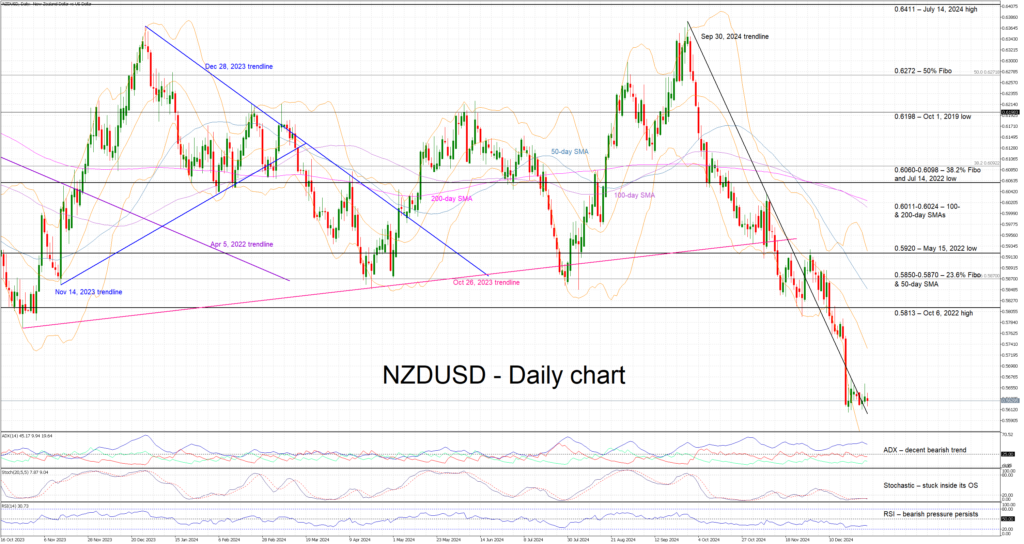- NZDUSD continues to trade near its two-year low
- The bearish trend since September 30 is still dominant
- Momentum indicators remain bearish
NZDUSD is edging slightly lower again today, as the pair continues to trade near its two-year low. Actually, the light liquidity conditions and the reduced appetite for aggressive positioning have resulted in extensive range-trading over the past ten trading sessions. The bearish trend that has been in place since September 30 is still dominant, with the bears aiming for another lower low.
Meanwhile, the momentum indicators remain mostly bearish. Specifically, the RSI is moving sideways, well below its 50-midpoint, indicating decent bearish pressure on NZDUSD. Interestingly, the Average Directional Movement Index (ADX) is edging lower and potentially sending a very early signal that the current bearish trend could be weakening. More importantly, the stochastic oscillator continues to hover inside its oversold area (OS). It may stay there for a while before showing an appetite for a decisive move higher.
If the bears remain confident, they could try to push NZDUSD below the September 30 bearish trendline and record a lower low. The next key support area is currently positioned at the October 13, 2022 low at 0.5511, potentially giving the bears the chance to record a new four-year low.
On the other hand, the bulls are anxiously trying to regain market control and push NZDUSD higher. A move towards the October 6, 2022 high at 0.5813 could be a significant short-term win for the bulls, opening the door to an even more protracted move higher. The busy 0.5850-0.5870 area, which is populated by the 23.6% Fibonacci retracement of the April 5, 2022 – October 13, 2022 downtrend and the 50-day simple moving average (SMA), could then stand in the bulls’ way, a tad below the May 15, 2022 low at 0.5920.
To sum up, despite the festive market conditions, NZDUSD bears remain firmly in control and are potentially preparing for another selloff.


